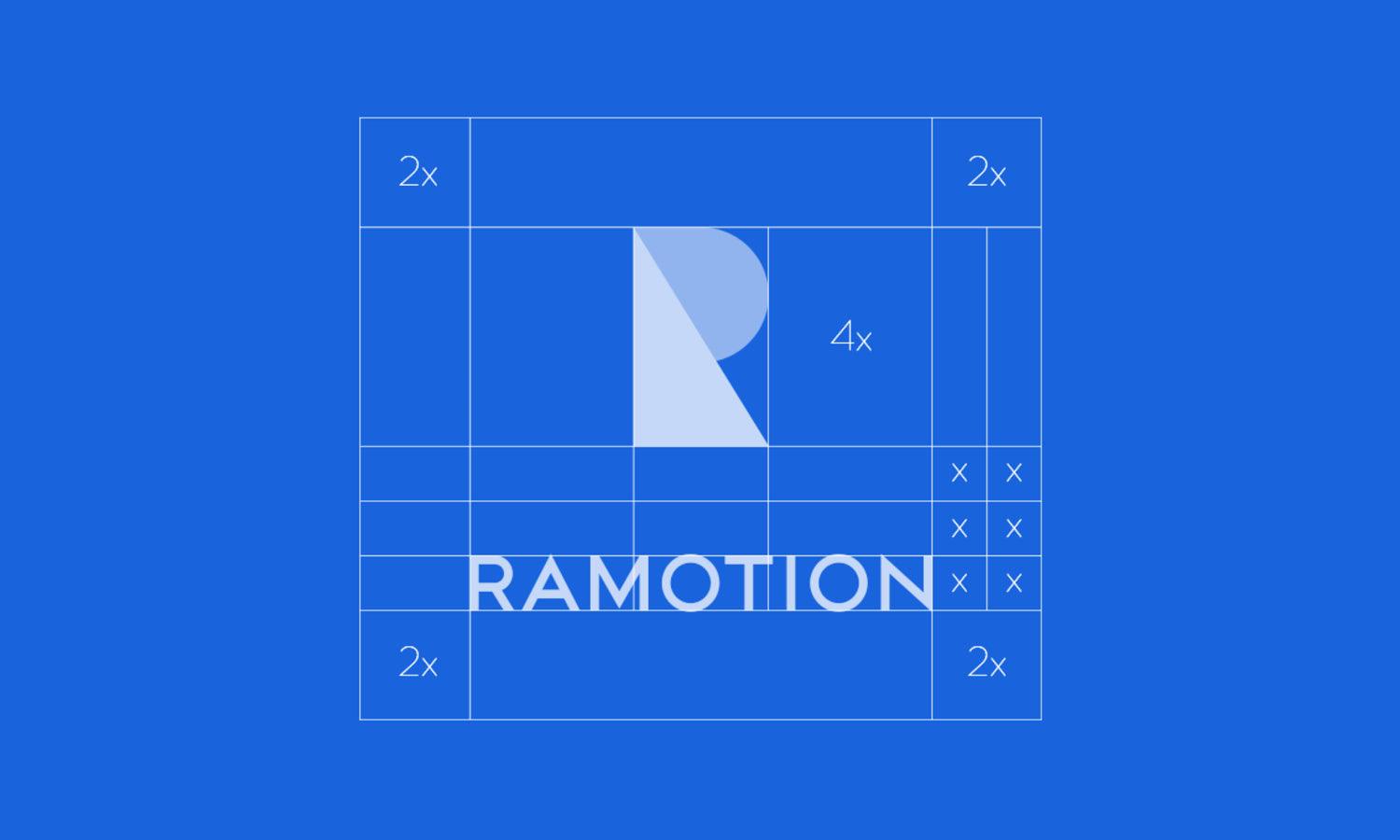How To Create Logo Design & Branding At Once

Created by: Mateus Araújo | https://www.behance.net/gallery/146841789/JIMMYS-PIZZA-DELIVERY
In the expansive realm of business, logo design and branding often intermingle, becoming the pillars upon which companies project their identity. While many use these terms interchangeably, there's a nuanced distinction between them. Logo design crafts the visual symbol – an emblem that resonates, becoming instantly recognizable. It's the face of a brand, capturing a business's essence in a glance. On the other hand, branding dives deeper. It's the story, the voice, and the emotion that a business conveys.
Branding dictates how customers perceive and engage with a company, while the logo serves as a visual ambassador of this narrative. Together, they form a powerful duo, creating an indelible impression in the minds of consumers. As businesses strive to establish a robust presence, understanding the symbiotic relationship between logo design and branding becomes paramount. This article seeks to unravel the art and science behind creating a logo and branding that not only coexist but elevate each other, offering businesses a roadmap to a compelling and cohesive brand identity.
Fundamentals of Logo Design
At the heart of every memorable brand lies a compelling logo. Dive into the world of logo design, and you'll uncover layers of intricacy and intention. A logo isn't just a pretty graphic; it's a visual representation of a brand's ethos, values, and aspirations. Here are the key fundamentals to grasp as you embark on the logo design journey.
Characteristics of a Strong Logo: An effective logo design is more than just eye-catching—it should be distinctive, adaptable, timeless, and appropriate. A unique logo ensures distinction in the marketplace, helping a brand stand out amidst a sea of competitors. Adaptability is crucial in this digital age, where logos need to shine across various mediums, from business cards to billboards and websites. Timelessness guarantees that the logo remains relevant over the years, while appropriateness ensures that the logo aligns seamlessly with the brand's identity.
The Role of Color, Typography, and Symbolism: Colors play a pivotal role in conveying emotion and tone. Blue might evoke feelings of trust and calm, while red can signal passion or urgency. Choosing the right hue can magnify the impact of logo design. Typography, too, speaks volumes. The choice of font—be it modern, classic, bold, or delicate—can communicate a brand's personality even before a single word is read. Symbols or icons add another layer, providing a visual cue that resonates with the audience. For instance, a tree might symbolize growth or sustainability, aligning with a brand's green initiatives.
Avoiding Common Logo Design Mistakes: In the quest for originality, some brands may fall into the trap of overcomplication. Simplicity often reigns supreme in logo design. A cluttered logo can confuse the audience and weaken brand recall. It's also essential to steer clear of fleeting trends. While it's tempting to ride the wave of what's "in," a logo should ideally outlast trends, remaining relevant for decades. Another common mistake is inconsistency in branding elements. Cohesion between logo design and broader branding ensures a harmonious and recognizable brand identity.
As the realm of logo design continues to evolve, it remains intrinsically tied to branding. A logo is the visual cornerstone of a brand, and mastering its fundamentals can pave the way for a robust and resonant brand image. As businesses navigate the challenges of carving a niche, an understanding of these logo design essentials becomes their guiding star.

Created by: Kaio Cezar | https://www.behance.net/gallery/127150983/dolomiti
The Branding Process
Branding, often regarded as the soul of a business, is an intricate dance of storytelling, emotion, and perception. It goes beyond just a catchy logo design or a memorable tagline. Branding weaves the tapestry of a brand's identity, shaping how it's perceived in the marketplace and the hearts of consumers. Delving into the branding process illuminates the roadmap that businesses traverse to create a compelling and enduring brand narrative.
Defining Your Brand Identity
Before diving into visuals or messaging, it's crucial to introspect. What is the mission of the business? What values guide its operations? What promises does it make to its customers? These foundational questions form the bedrock of the brand's identity. Establishing this core allows for consistent and authentic branding endeavors, ensuring every subsequent step aligns with this defined essence.
Brand Voice and Personality
Just as individuals have distinct personalities and ways of expressing themselves, so do brands. This voice should echo in every piece of content, be it a social media post, an advertisement, or a customer service interaction. Is the brand formal or playful? Professional or casual? This voice should be a harmonious extension of the brand's identity, resonating with the target audience while differentiating the brand in a crowded market.
Visual Identity Beyond the Logo
While a logo design is the emblematic face of a brand, other visual elements contribute to the branding tableau. This includes the color palette, typography, imagery, and even the design of a website or product packaging. Together, they form a cohesive visual story, reinforcing the brand's identity at every touchpoint. For instance, a brand focused on sustainability might opt for earthy tones and imagery that evokes nature, harmonizing with its mission.
Creating a Branding Strategy
With the identity, voice, and visuals in place, it's time to strategize. This involves understanding the target audience, researching competitors, and pinpointing unique selling points. The strategy shapes how the brand communicates its value proposition, engages with customers, and carves its niche in the marketplace.
Branding is an ongoing journey, not a one-time endeavor. It necessitates continuous refinement and evolution, ensuring the brand stays relevant and resonant. As businesses grow and markets shift, the branding process offers a compass, guiding ventures towards a compelling and authentic brand narrative. In this vast ecosystem where branding and logo design intertwine, understanding this process is the key to crafting a memorable brand saga.

Created by: Victor Berriel | https://www.behance.net/gallery/135050833/Trio
Merging Logo Design with Branding
In the intricate ballet of business imagery and identity, two central figures emerge: logo design and branding. While each holds its distinct importance, their true power is realized when they move in harmony. The merger of logo design with branding crafts a unified, compelling narrative, ensuring that the visual symbol and the brand story are inextricably linked.
Consistency Is Key
Think of your favorite brands. The chances are high that their logo instantly conjures up a specific emotion, value, or idea. This isn't by accident. It's the result of meticulous branding where the logo design acts as a visual anchor. Every color, shape, and line in the logo should seamlessly tie back to the brand's core values and ethos. When this consistency is achieved, the logo becomes more than just a graphic; it becomes a story in itself.
Brand Guidelines and Standards
One tangible way to ensure this synergy is through the creation of brand guidelines. These guidelines act as a rulebook, detailing the precise colors, fonts, and layouts associated with the brand. They dictate how the logo can be used — its sizing, spacing, and acceptable variations. By adhering to these standards, businesses ensure that their logo design and branding remain aligned across all platforms and touchpoints.
Evolving Your Logo with Your Brand
Brands, much like living entities, evolve. As they grow, pivot, or rebrand, their logo too might need a refresh. However, any evolution should be approached with caution. The challenge lies in updating the logo design while retaining its essence and the branding elements that audiences have come to recognize. Successful logo evolutions are ones that feel like natural progressions, not jarring departures.
The Symbiotic Relationship
At its core, the relationship between logo design and branding is symbiotic. A well-designed logo can elevate a brand, making it memorable and iconic. Conversely, strong branding can imbue a logo with depth and meaning, transforming it from a mere graphic to a symbol rich with significance. Together, they create a brand's visual and emotional identity.
In the dynamic world of business, where competition is fierce and attention spans are fleeting, the fusion of logo design with branding becomes paramount. It's this union that captures minds and hearts, creating a lasting imprint. For businesses aiming to leave an indelible mark, understanding and harnessing the power of this merger is not just beneficial—it's essential.

Created by: Guilherme Vissotto | https://www.behance.net/gallery/139149975/dayinvest
Best Practices in Logo Design & Branding
In the realm of visual storytelling, logo design and branding hold esteemed positions. They are the silent communicators, the visual custodians of a brand's ethos. Yet, the journey to crafting them is laden with challenges. To navigate this path effectively, it's essential to embrace the best practices in logo design and branding, ensuring that the outcome is both compelling and resonant.
Research, Research, Research
Every iconic logo or powerful brand strategy is rooted in thorough research. This involves understanding the target audience, their preferences, pain points, and aspirations. Equally vital is studying competitors, discerning market gaps, and identifying areas where your brand can shine. Armed with this knowledge, logo design and branding can be tailored to resonate deeply with the desired demographic.
Seek Feedback and Iterate
Design, by nature, is subjective. What resonates with one might not with another. Hence, it's invaluable to seek diverse feedback. This could be from internal teams, focus groups, or even potential customers. Constructive feedback can shed light on blind spots and offer fresh perspectives, enabling refinements that elevate the logo and brand narrative.
Stay Updated with Trends but Maintain Authenticity
The design world is ever-evolving, with trends emerging and fading. While it's beneficial to be aware of these shifts, it's pivotal not to lose the brand's essence in the pursuit of what's "trendy." The goal should be to create a timeless logo design and branding strategy that, while modern, stays true to the brand's core values and identity.
Simplicity Often Reigns Supreme
In the quest for differentiation, there's a temptation to overcomplicate. However, history has shown that some of the most iconic logos are simple and uncluttered. A clear, straightforward design ensures easy recognition and adaptability across various mediums, from digital platforms to print.
Consistency Across All Touchpoints
Once the logo design and branding strategy are in place, consistency becomes king. Every interaction, be it a social media post, a website visit, or a product package, should echo the brand's visual and emotional identity. This uniformity fortifies brand recall and fosters trust among consumers.
The art of logo design and branding is a delicate balance of creativity, strategy, and authenticity. By embracing these best practices, brands can ensure that their visual identity not only stands out in the crowded marketplace but also forms a deep, lasting connection with their audience. In this symphony of visuals and emotions, it's these practices that strike the right chord.

Created by: Léo Tavares | https://www.behance.net/gallery/138615255/Brotos-Cozinha-Vegetariana
Real-world Examples
Delving into the world of logo design and branding, theoretical knowledge and best practices provide a solid foundation. However, real-world examples can illuminate these concepts, offering tangible insights and showcasing the principles in action. Let's explore some iconic instances where logo design and branding have been masterfully intertwined to create lasting brand legacies.
Apple
One of the most recognizable logos globally, Apple's simple apple icon with a bite taken out of it is a testament to the power of simplicity in logo design. The logo, combined with the company's consistent branding focused on innovation, sleek design, and user experience, has made Apple a household name. Even without the company's name, the logo alone evokes feelings of modernity, innovation, and premium quality.
Nike
The Nike Swoosh is another prime example of simplicity and effectiveness. Representing movement and the wing of the Greek goddess Nike, this logo seamlessly aligns with the brand's ethos of athleticism, achievement, and dynamism. Nike's branding, with its "Just Do It" mantra, encapsulates motivation and pushing boundaries, making the logo and brand narrative harmoniously resonate.
Coca-Cola
Delving into the beverage sector, Coca-Cola's cursive typography logo is iconic. It has undergone subtle changes over the years but has retained its core design, highlighting the importance of timelessness. Coca-Cola's branding, centered around happiness, togetherness, and refreshment, is consistently echoed in its advertising, making its logo design and branding an intertwined duo.
Airbnb
A more recent example, Airbnb's logo, known as the "Bélo", represents belonging. It can be interpreted as an 'A' for Airbnb, an upside-down heart, or even a butt. Regardless of its interpretation, Airbnb's branding strategy focuses on community, trust, and the idea of feeling at home anywhere in the world. The logo design, with its simplicity and adaptability, complements this branding narrative effectively.
McDonald's
The golden arches of McDonald's are instantly recognizable worldwide. Representing the letter 'M', this logo design is simple yet impactful. McDonald's branding, focusing on fast service, consistent quality, and a family-friendly environment, has ensured that these golden arches evoke feelings of familiarity and comfort globally.
These real-world examples showcase how logo design and branding, when effectively merged, can create powerful brand identities that resonate across demographics and geographies. Each logo, while distinct, aligns seamlessly with its brand's narrative, making them memorable and iconic. For businesses aiming to carve a niche in their sectors, these examples serve as inspirations, illuminating the path to masterful logo design and branding.
Conclusion
In the vast landscape of business identity, logo design and branding stand as twin pillars. They craft the visual and emotional narrative of a brand, ensuring its resonance with audiences. As we've journeyed through principles, best practices, and real-world examples, the synergy between these two elements becomes undeniably clear. For any business aspiring to leave a lasting mark, mastering this harmonious blend of logo design and branding is not just beneficial—it's imperative.
Let Us Know What You Think!
These fantastic logo design articles are written and curated by Kreafolk's team. We hope you enjoy our information and remember to leave us a comment below. Cheers!











Leave a Comment